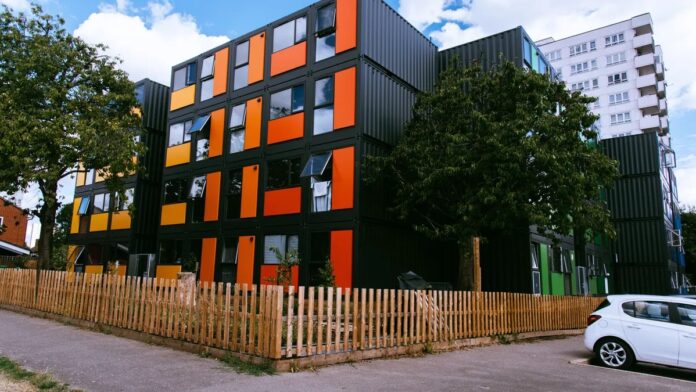Hope Gardens: A Unique Approach to Temporary Housing in London’s Crisis
Nestled in the west London borough of Ealing, Hope Gardens stands as a temporary accommodation solution for those who find themselves without secure or long-term housing. While the location may evoke sentiments of last resort for many residents, it represents a crucial initiative in a city grappling with a profound housing crisis. As we delve into the structure and implications of Hope Gardens, we will explore its design, the residents’ experiences, and the broader context of London’s housing challenges.
Context of the Housing Crisis
The housing crisis in London is strikingly evident. Government statistics reveal that over 56,000 families found themselves in temporary accommodation as of the second quarter of 2018, with 2,100 residing in Ealing alone. This figure accounts for nearly 70% of England’s total and highlights the adverse housing conditions London has experienced for several years. As high-end luxury developments rise, affordable public housing remains stagnant, with no substantial developments since the 1980s.
Innovating with Shipping Containers
Hope Gardens employs a unique solution to address the urgent demand for housing: inhabitable shipping containers. While the imagery of such containers might conjure associations with modern minimalist lifestyles—often linked to young professionals in gentrified neighborhoods—the reality for residents at Hope Gardens is starkly different. Designed exclusively for habitation, these units are practical, equipped with basic furniture and utilities, but lack the flashiness often associated with converted shipping containers.
Developed by QED Properties in partnership with ISO Spaces, Hope Gardens provides around 216 units, adequately accommodating about 60 families. Assembled within 24 weeks, residents moved in during December 2017. The site operates on a “meanwhile” basis, earmarked for future development but available for seven years as the housing needs of the community remain pressing.
Living Conditions at Hope Gardens
The design of the modular homes at Hope Gardens, while modern and colorful, is utilitarian. Each unit offers essential amenities, including beds, a couch, and basic kitchen appliances. Compared to conventional hostel or B&B options, residents have reported a much-needed sense of privacy and autonomy—having their front door, for instance, allows for a semblance of stability during turbulent times.
Despite these advantages, tenants at Hope Gardens face challenges. Many have raised concerns regarding temperature regulation, noting that the metal containers can be too cold in winter and excessively hot in summer. Such issues highlight that while the units are visually appealing, they may not possess the comfort expected in long-term housing solutions.
A Broader Perspective on Temporary Housing
Temporary accommodations like Hope Gardens serve a vital purpose in helping individuals and families avoid the perils of homelessness. However, the notion of residing in temporary structures has drawn criticism. Some experts argue that these arrangements symbolize a broken housing system that prioritizes speculative investments over addressing the immediate needs of vulnerable residents. As Anna Minton, a leading academic on the housing crisis, points out, these “meanwhile” sites often foreshadow gentrification, merely prolonging a system that doesn’t adequately support those in need.
The Future of Modular Housing
Despite the critiques, there is a compelling argument for the potential of modular housing as part of the solution to the broader housing crisis. With cities facing increasing population pressures and shifting living patterns, modular constructions could represent a new paradigm in urban housing. Ross Gilbert, managing director of QED Properties, emphasizes the rapid adaptability of modular structures. He posits that this modern approach allows for a dynamic and responsive built environment, enabling residents to adjust their living spaces as their circumstances change.
Conclusion
Hope Gardens exemplifies the urgent need for innovative housing solutions in a city where the disparity between the wealthy and the homeless continues to widen. While it may not be a permanent answer, the development stands at an intersection of adaptability and necessity—addressing immediate housing needs while highlighting the larger systemic issues inherent in London’s housing landscape. As we look to the future, the conversation around modular housing and temporary accommodations must evolve, ensuring that they contribute positively to the communities they serve, rather than merely acting as stopgaps in a much larger crisis.
Hope Gardens encapsulates both hope and concern, embodying the complexities of London’s housing dilemma while providing critical shelter to its residents. In the grand scheme, it invites us to consider not just the architecture of housing but the approach to creating lasting communities amid ongoing challenges.














